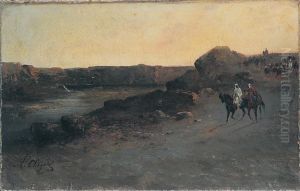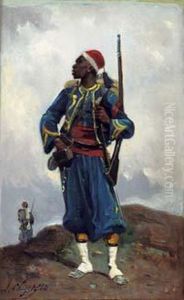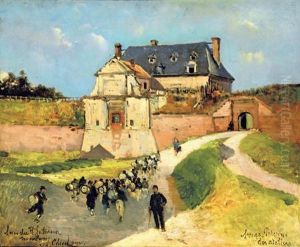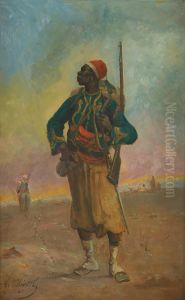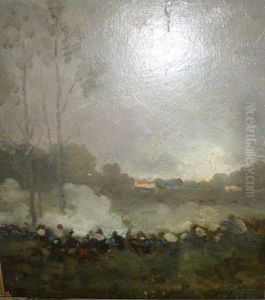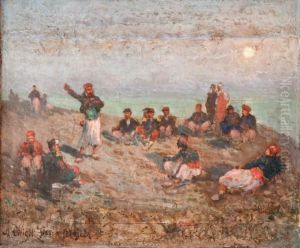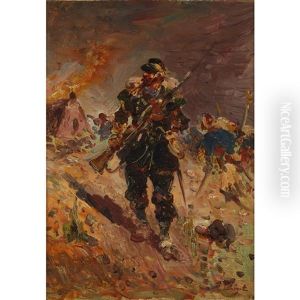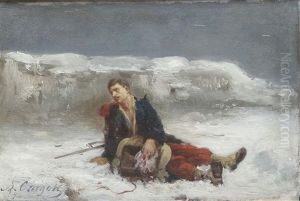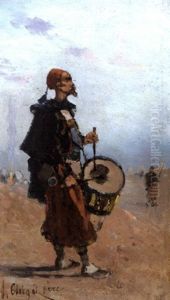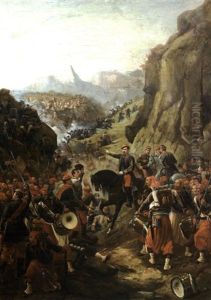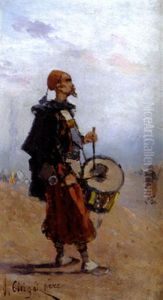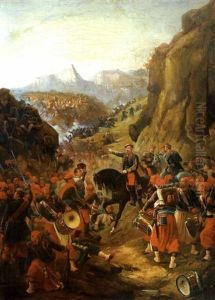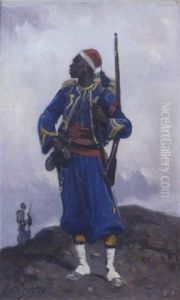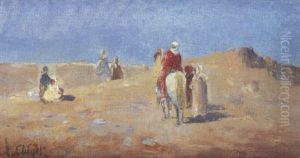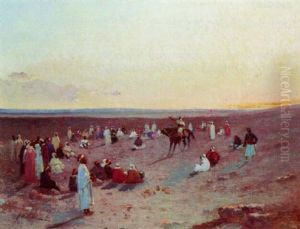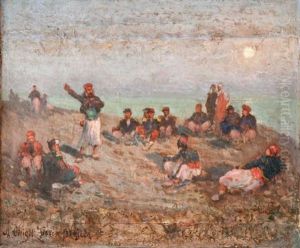Alphonse Chigot Paintings
Alphonse Chigot was a French artist renowned for his landscape paintings, particularly those capturing the scenes of northern France. Born on August 11, 1860, in Valenciennes, France, Chigot came from a family deeply entrenched in the arts. His father, Émile Chigot, was a respected painter, which undoubtedly influenced Alphonse's early exposure to and passion for art. Throughout his life, Chigot honed his skills and developed a unique style that combined elements of realism and impressionism, capturing the natural beauty of the French countryside with a particular emphasis on maritime landscapes and scenes of daily life in rural France.
Chigot's artistic journey was marked by his studies at the École des Beaux-Arts in Paris, where he was under the tutelage of renowned artists such as Alexandre Cabanel. Despite the influence of academic training, Chigot was drawn to the en plein air method of painting, which allowed him to capture the transient effects of light and atmosphere on the landscape—a hallmark of impressionist art. His works often depicted the coastal areas of Normandy and Pas-de-Calais, regions known for their dynamic seascapes and rustic charm.
Throughout his career, Alphonse Chigot was an active participant in the French art scene. He exhibited his works at the Salon des Artistes Français, where he received several awards, including a silver medal in 1900. His paintings were well-received by critics and collectors alike, contributing to his reputation as a significant figure in the post-impressionist movement in France.
Chigot's influence extended beyond his paintings. He was a mentor to younger artists and was involved in various artistic communities, promoting the appreciation of landscape painting and the importance of capturing the essence of French regional landscapes. His works are part of several museum collections in France, including the Musée des Beaux-Arts in his hometown of Valenciennes.
Alphonse Chigot's legacy is that of a painter who dedicated his life to capturing the fleeting moments of natural beauty in the French countryside, contributing to the rich tapestry of French art in the late 19th and early 20th centuries. He passed away on December 7, 1929, in Valenciennes, leaving behind a body of work that continues to be celebrated for its contribution to the development of landscape painting in modern art.
